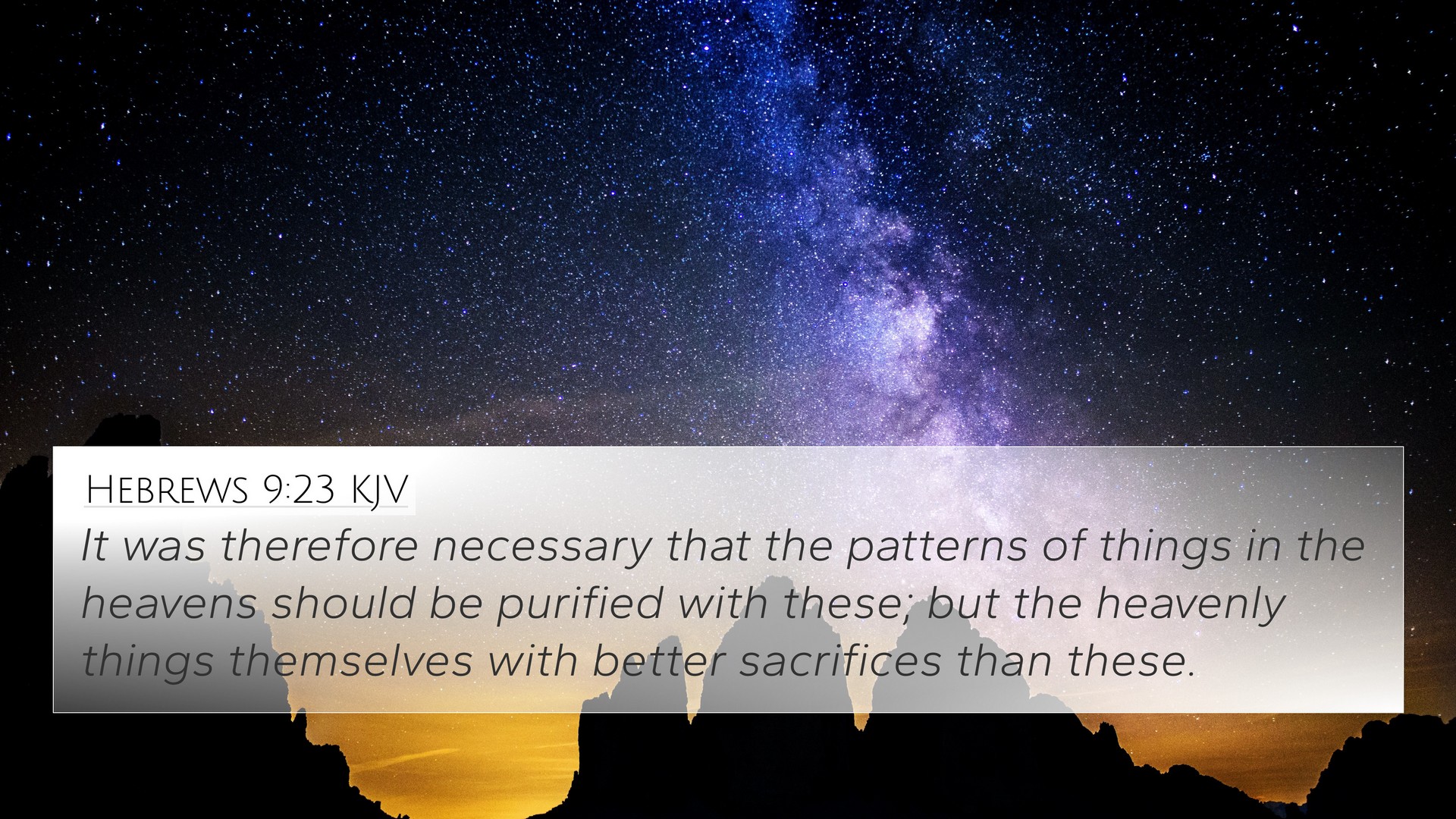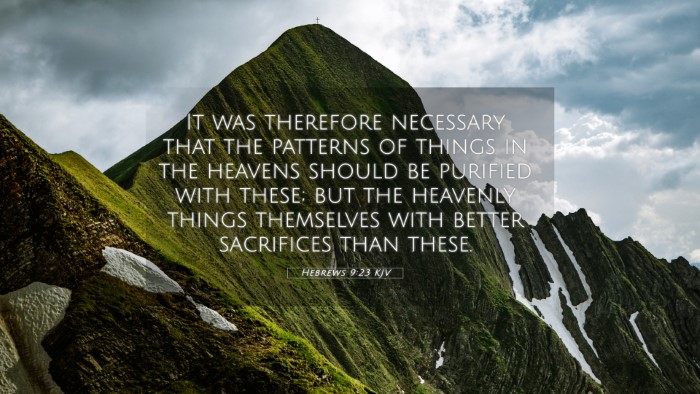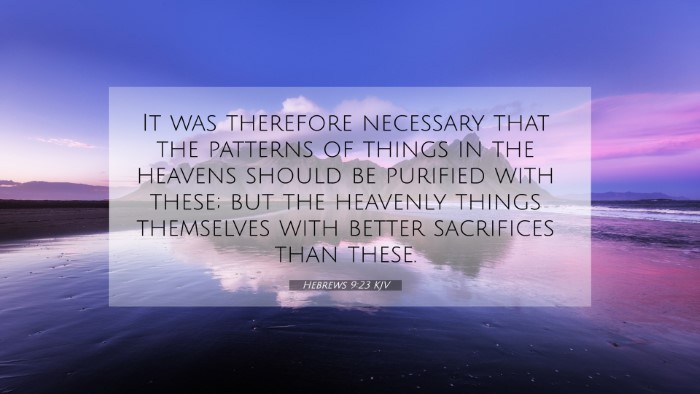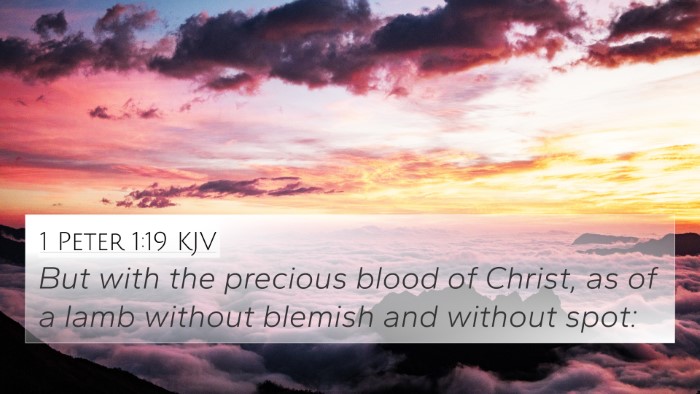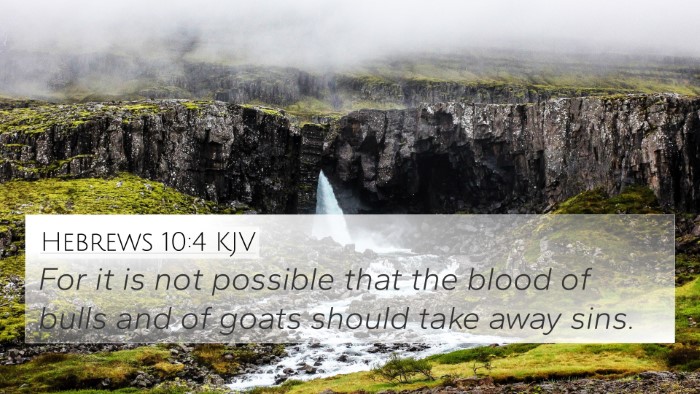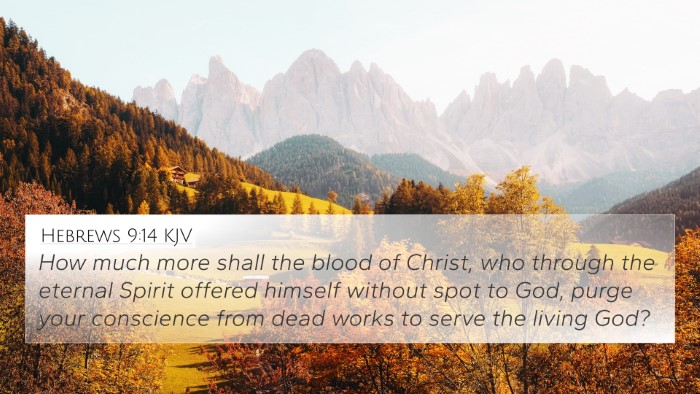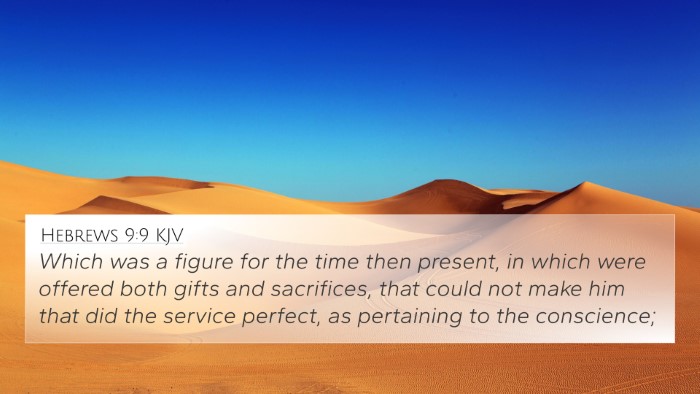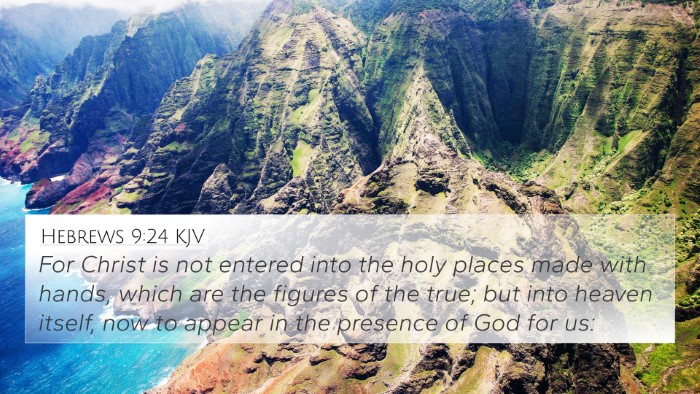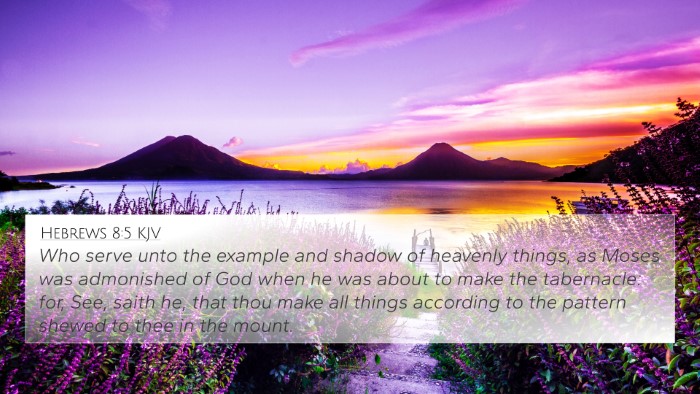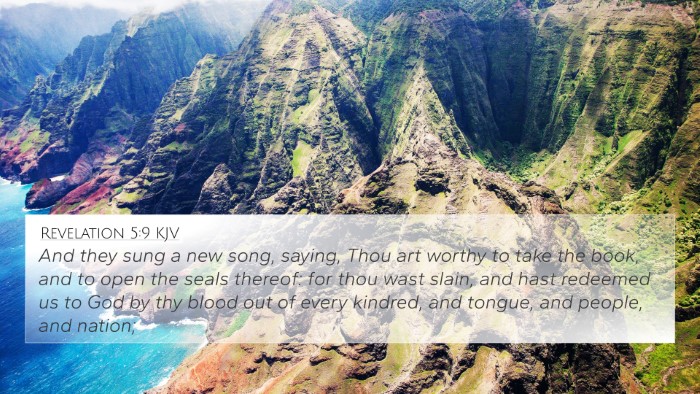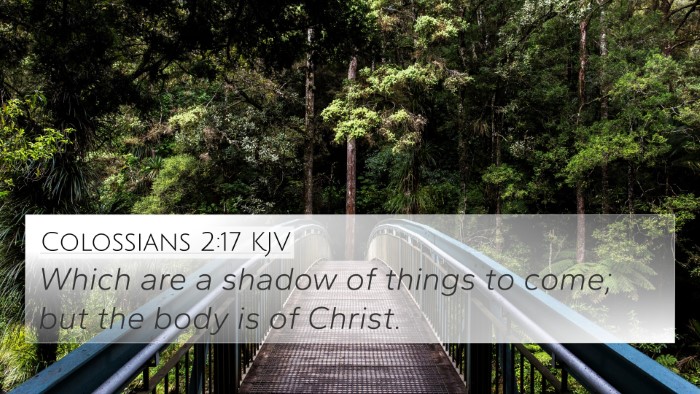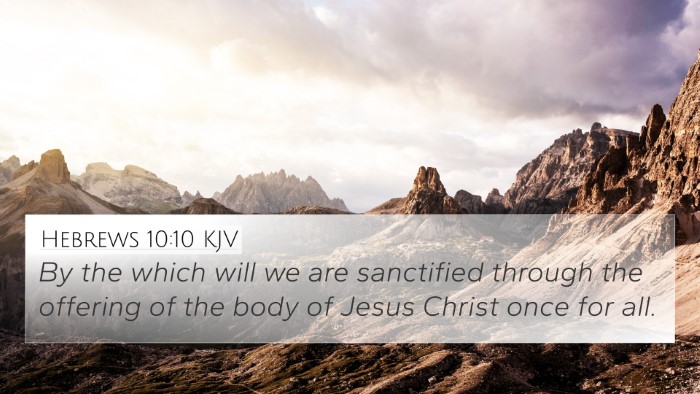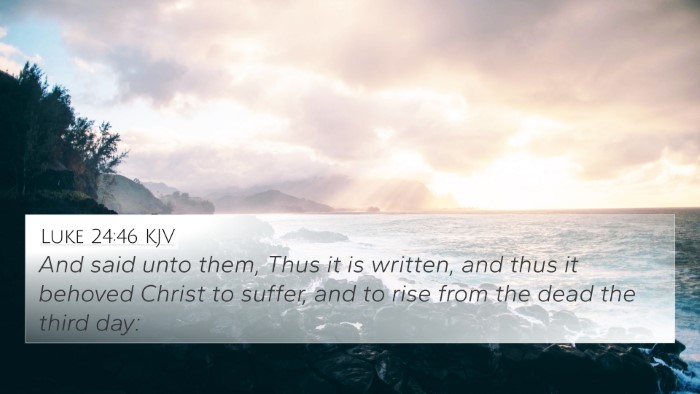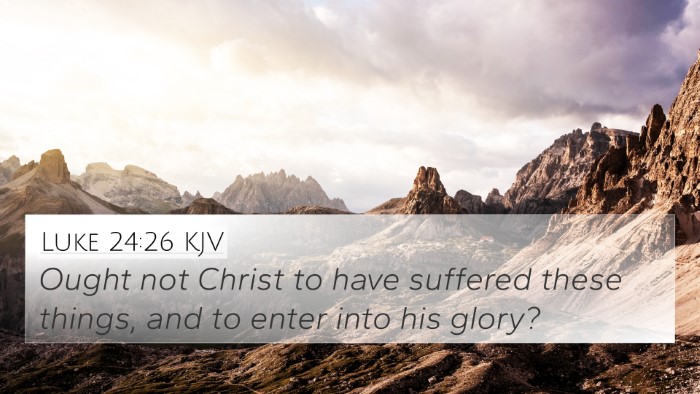Hebrews 9:23 - Understanding the Verse
Hebrews 9:23 states: "It was therefore necessary that the patterns of things in the heavens should be purified with these; but the heavenly things themselves with better sacrifices than these." This verse emphasizes the necessity of purification — not only for earthly rituals but also for heavenly realities, which were made possible through Christ's superior sacrifice.
Summary of Meaning
This passage highlights a profound theological concept regarding the relationship between the Old Covenant practices and the New Covenant accomplished through Jesus Christ. The author of Hebrews asserts that while the previous system required sacrificial offerings, these were mere shadows of the more comprehensive divine reality initiated by Christ's ultimate sacrifice.
Commentary Insights
-
Matthew Henry: Henry emphasizes the significance of the "patterns" referred to in the verse, indicating that the Old Testament sacrifices foreshadowed Christ's atoning work. He reflects on the necessity of these patterns being purified as a means to point to the greater sacrifice — Christ himself.
-
Albert Barnes: Barnes notes that the "heavens" reference the spiritual realm and that the sacrifices mentioned must be seen in the context of their effectiveness. He argues that Christ's sacrifice offers superior purification, laying the groundwork for believers to enter into a relationship with God unencumbered by the limitations of the older covenant.
-
Adam Clarke: Clarke stresses the importance of understanding the "better sacrifices," which points to Christ’s sacrifice as the ultimate and perfect offering that fulfills the requirements of both earthly and heavenly purification. He encourages readers to understand that the true essence of these verses lies in their fulfillment in Christ.
Bible Cross-References
Understanding Hebrews 9:23 is enhanced through its connections with several other scriptures. Here are 10 significant cross-references that illustrate the thematic unity and prophetic foreshadowing found within the Bible:
- Exodus 25:9 - "According to all that I show you, after the pattern of the tabernacle, and the pattern of all the instruments thereof, even so shall ye make it." (Signifying the importance of the earthly tabernacle as a pattern.)
- Hebrews 9:3-5 - Further elaboration on the holy places and the items used therein that foreshadow Christ’s sacrifice.
- Colossians 2:17 - "Which are a shadow of things to come; but the body is of Christ." (Clarifying the typology of the Old Covenant.)
- 1 Peter 1:19 - "But with the precious blood of Christ, as of a lamb without blemish and without spot." (Affirming the quality and necessity of Christ's sacrifice.)
- Romans 8:3 - "For what the law could not do, in that it was weak through the flesh, God sending his own Son." (Highlighting the inadequacy of the law's sacrifices compared to Christ.)
- Hebrews 10:4 - "For it is not possible that the blood of bulls and of goats should take away sins." (Emphasizing that the Old Testament sacrifices were insufficient for true forgiveness.)
- John 1:29 - "Behold the Lamb of God, which taketh away the sin of the world." (Jesus as the ultimate sacrificial Lamb of God.)
- Revelation 5:9 - "For thou wast slain, and hast redeemed us to God by thy blood." (The ultimate purpose and outcome of the sacrifice.)
- Hebrews 9:12 - "Neither by the blood of goats and calves, but by his own blood he entered in once into the holy place, having obtained eternal redemption for us." (Explicitly linking the purification process needed.)
- Lamentations 3:22-23 - "It is of the Lord's mercies that we are not consumed, because his compassions fail not." (Connecting the themes of mercy and sacrifice.)
Connections Between Bible Verses
The interconnected nature of scriptures highlights a grand narrative in the Bible, reflecting the sacrificial system leading up to the ultimate sacrifice of Jesus.
Hebrews 9:23 serves as a pivotal verse that encapsulates the transition from the Old Covenant to the New Covenant. By utilizing tools such as a Bible concordance and a Bible cross-reference guide, individuals can deepen their understanding of such themes through a cross-reference Bible study.
How to Use Bible Cross-References for Deeper Study
Ultimately, the process of cross-referencing in biblical study offers a pathway to understanding the rich tapestry of scripture. Here are practical tips on how to implement cross-referencing:
- Identify Key Themes: Look for major themes in Hebrews 9:23 and search for scriptures that discuss similar aspects.
- Utilize Resources: Use Bible reference resources to find verses that interlink between the Old and New Testaments.
- Investigate Verse Parallels: Do a comparative analysis of verses connected by shared concepts or wording.
- Reflect on Inter-Biblical Dialogues: Consider how a verse in Hebrews might respond to or illuminate another verse in, say, Isaiah or Exodus.
- Plan for Sermons: Understanding the connections can aid in sermon preparation, ensuring that the teachings resonate across different scriptural contexts.
- Engage in Group Studies: Discussions with others about the cross-references and how they illuminate the text can lead to richer insights.
Conclusion
In exploring Hebrews 9:23, we witness not only the order and purity demanded by God through sacrificial practices, but also the fulfillment of those practices in Christ. This informs the believers' understanding of purification in both spiritual and earthly realms. By engaging with contextual cross-references, one can find a deeper appreciation and recognition of the unified message of redemption running throughout the various books of the Bible.
